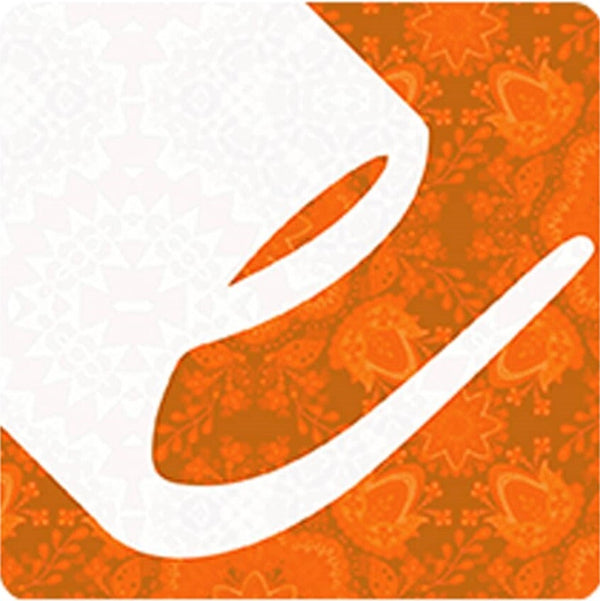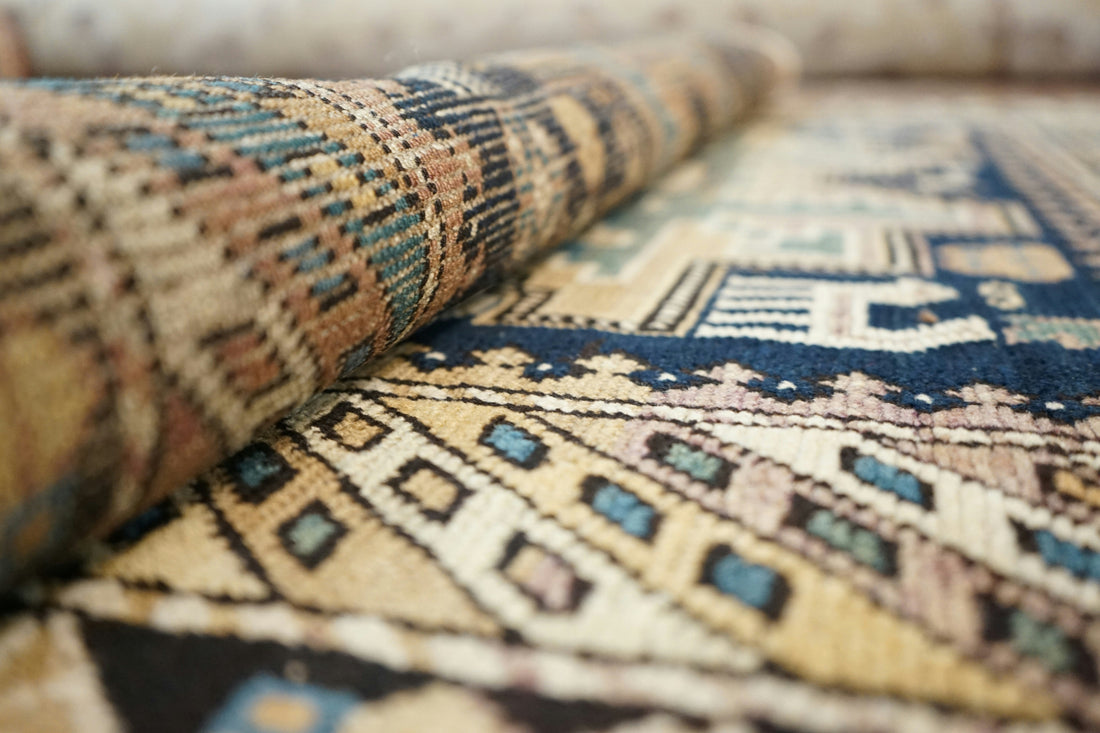Persian rugs are renowned for their intricate designs and patterns, which are as diverse as they are captivating. Let's explore some of the most iconic elements that adorn these exquisite pieces of art.
Floral Designs
The beauty of Persian floral rugs lies in their diversity. You'll encounter a vast collection of floral patterns, from delicate and refined to bold and exuberant.
Some rugs feature large, central medallions adorned with blossoming blooms, while others showcase an all-over floral field.
Floral Medallion-Allover / Shah Abbasi Design
The Floral Medallion is also known as Shah Abbasi Design. This design is characterized by a field densely filled with stylized floral motifs, often arranged symmetrically around a central medallion. The medallion, acting as a focal point, is typically larger and more intricate than the surrounding floral patterns.
Floral Medallion Plain (Open Field)
In contrast to the all-over pattern, this design features a central medallion set against a plain or sparsely decorated background. The medallion takes center stage, allowing its intricacies to be fully appreciated. The open field enhances the prominence of the medallion, creating a striking visual impact.
Floral All Over
As the name suggests, this design covers the entire rug with a continuous pattern of floral motifs. There is no central medallion or dominant focal point. Instead, the emphasis is on the intricate interplay of flowers and leaves, creating a visually rich and dynamic composition. This style often showcases the weaver's mastery in creating a cohesive and visually pleasing pattern across the entire rug.
Geometric Designs
Geometric patterns in Persian rugs are equally as captivating as their floral counterparts. They often reflect a more austere and minimalist aesthetic, yet they are no less intricate or visually striking. Let's categorize these designs:
Geometric Medallion
This design centers around a prominent geometric medallion, typically a square, hexagon, octagon, or diamond. The medallion is often adorned with intricate geometric motifs and surrounded by a border or field of smaller geometric shapes.
Geometric All-Over
In this pattern, geometric shapes are repeated uniformly across the rug's surface, creating a dynamic and visually engaging composition. The absence of a central medallion allows the geometric motifs to take center stage.
Geometric Grid
This design employs a grid-like structure as its foundation. Geometric shapes, such as squares, rectangles, or triangles, are arranged in a grid pattern, often incorporating variations in color and size to create visual interest.
Herati
The Herati design is one of the most recognizable and beloved patterns in the world of Persian rugs. Unlike the Shah Abbasi, which is characterized by large, floral motifs, the Herati is defined by its geometric precision and repetitive elements.
The foundation of the Herati pattern is a geometric shape, often a diamond or square. Within this geometric shape, you'll find a small, stylized flower or rosette.
The central motif is surrounded by four stylized leaves, often resembling fish, hence the alternative name "Mahi" for this design. The Herati pattern is characterized by its consistent repetition across the rug's surface, creating a rhythmic and harmonious effect.
What is the Symbolism of the Herati Design?
In Persian culture, the Boteh is often associated with life, growth, and fertility. Its shape can also be interpreted as a cypress tree, a symbol of immortality.
Boteh
The Boteh is a Farsi word which means bud or immature flower. Boteh often referred to as the Paisley pattern in Western cultures, is a distinctive and iconic motif in Persian rug design. It is characterized by its teardrop or flame-like shape and is typically filled with intricate details such as leaves, flowers, or even smaller Boteh motifs.
Arrangement: Boteh designs are typically found in all-over patterns, with the motifs repeated across the rug's surface. They can also be incorporated into borders or as part of larger compositions.
Regions: Rugs from regions like Kerman, Kashan, and Isfahan are particularly renowned for their beautiful Boteh designs.
Vase
The Vase design is a distinctive and elegant motif commonly found in Persian rugs from regions like Kashan Tabriz and Isfahan.
A vase, often elongated and graceful, is the focal point of the design. The vase is filled with a variety of flowers, from simple roses to intricate bouquets. Vases are typically placed symmetrically throughout the rug, creating a sense of balance. The complexity of the vase and floral designs can vary widely, from simple and geometric to elaborate and naturalistic.
Tree of Life
The Tree of Life is a powerful and enduring symbol found in many cultures, and Persian rugs are no exception. The tree of life designs is found in Persian rugs like Tabriz, Kashan, and Isfahan rugs.
A large, stylized tree dominates the rug's center, often with its branches spreading outwards. The tree is often accompanied by animals, birds, flowers, and other elements that symbolize life's diversity. The style of the tree and its surroundings can vary widely, from simple and geometric to intricate and naturalistic.
What is the Symbolism of the Tree of Life Design?
The symbol of the Tree of Life design represents the interconnectedness of all living things, growth, life, knowledge, and abundance.
Prayer
Prayer rugs, or sajjadahs, are essential elements of Islamic worship. They serve both a practical and spiritual purpose, providing a clean and dedicated space for prayer while also reflecting the beauty and complexity of Islamic art.
While less common than geometric patterns, floral designs can also be found in prayer rugs, often stylized and abstract. Traditionally, prayer rugs were predominantly in earth tones like beige, brown, and green. However, contemporary designs offer a wider range of colors.
What Symbolizes the Prayer Rug Design?
The Prayer design symbolizes the direction of Mecca, the Kaaba. It is often depicted as a niche or arch.
Bird and Animal Designs
Persian rugs are a canvas for a diverse range of motifs, and animal and bird designs add a captivating dimension to these intricate works of art.
Common Bird Motifs
Peacocks: Often considered the king of birds, the peacock is a symbol of beauty, royalty, and immortality. Its elaborate tail feathers are a favorite motif for Persian rug weavers.
Ducks: Representing happiness, fidelity, and prosperity, ducks are frequently depicted in pairs, symbolizing harmony and companionship.
Eagles: As a symbol of power, courage, and victory, eagles are often featured in hunting scenes or as standalone motifs.
Phoenix: Representing rebirth and renewal, the phoenix is a mythical bird found in Persian mythology and art.
Common Animal Motifs
Lions: As symbols of strength, courage, and royalty, lions are often depicted in hunting scenes or as standalone figures.
Deer: Representing grace, gentleness, and purity, deer are common motifs in Persian rugs.
Horses: Symbolizing power, speed, and nobility, horses are frequently depicted in hunting scenes or as standalone figures.
Mythical Creatures: Persian rugs often feature mythical creatures like the Simorgh (a benevolent bird), the dragon, and the unicorn, which carry symbolic meanings related to power, wisdom, and protection.
Mina Khani
The Mina Khani design is a distinctive and captivating pattern in the Persian rugs.
It's characterized by a repetitive lattice of interlocking floral motifs, often resembling aster flowers, surrounded by delicate vines and tendrils.
The design consists of a consistent, rhythmic arrangement of floral elements. The flowers and tendrils are intricately woven together, creating a seamless and cohesive pattern.
Mina Khani rugs often feature a muted color palette, emphasizing the delicate nature of the design. While the origin of the Mina Khani pattern is debated, it's often associated with tribal rugs from Kurdistan and other regions.

